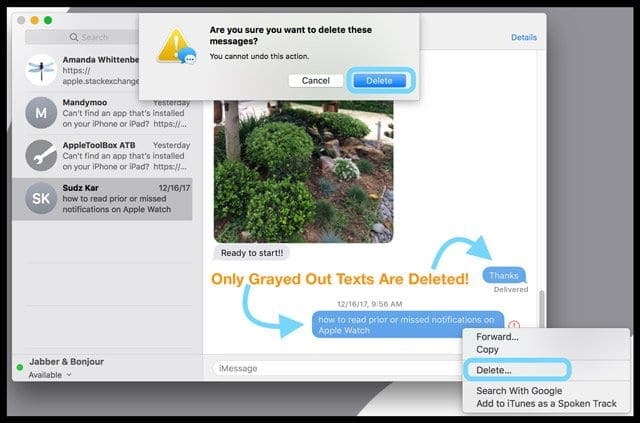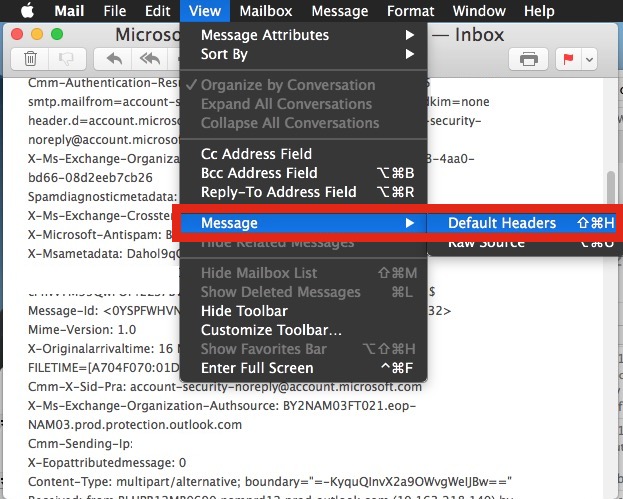Apple’s iMessage service is a brilliant and excellent way of keeping in touch with other Apple device users without incurring additional charges from your network provider. One of its most useful features is the ability to send and receive messages from any device connected to your iCloud account, including your Mac.
Apple just released Messages Beta, an instant messaging platform to replace the iChat in the upcoming OS X 10.8 Mountain Lion.Messages is basically like iMessages for the Mac. Messages allows users to send unlimited iMessages to any Mac, iPhone, iPad and iPod Touch. IMessage is an instant messaging service developed by Apple Inc. And launched in 2011. IMessage functions exclusively on Apple platforms: macOS, iOS, iPadOS, and watchOS. Core features of iMessage, available on all supported platforms, include sending texts, images, videos, and documents; getting delivery and read statuses (read receipts); and end-to-end encryption (which means no one.
Sometimes, however, it can be a little bit too much. If you’re in an office with your iPhone, iPad and Mac and all of of them alert you to an incoming message, with a slight delay between them, the sound of all those alerts can be, well, let’s say a distraction.
How to delete an iMessage conversation
Apple's made a public beta available of Messages for Mac available to anyone running Mac OS X 10.7 'Lion,' meaning that there's no need to wait until the release of 'Mountain Lion.' There are many alternatives to iMessage for Mac if you are looking to replace it. The most popular Mac alternative is Signal, which is both free and Open Source.If that doesn't suit you, our users have ranked more than 50 alternatives to iMessage and 15 are available for Mac so hopefully you can find a.

How To Update Mac Os X
Messages is an Apple app that’s installed as a part of macOS, so you can’t simply delete it. You can, however, delete individual messages and attachments. The easiest way to do that is to use CleanMyMac X’s Privacy tool, which allows you to specify which conversations and attachments you want to remove and then delete them all in a click.

Tip: if you need to delete or uninstall other, non-Apple apps, don’t just drag them to the trash — they’ll leave lots of files behind on you hard drive. It’s best to use a dedicated uninstaller tool, like CleanMyMac X. You can download CleanMyMac and try it out for free here.
Fortunately, you can turn iMessage off on your Mac either permanently, or just for a little while so you can get some work done.
How to deactivate iMessage
- Launch the Messages app on your Mac.
- In the Messages menu, click Preferences.
- In the left hand pane, click on the account you want to turn off.
- Uncheck the box next to Enable this account.
That will stop you receiving messages from showing on your Mac and means that if you want to turn them back on again, all you have to do is check that box.
Alternatively, if you want to turn them off permanently, you can sign out of your iCloud account in Messages altogether. This will only affect the Messages app and won’t stop you, for example, using iCloud Drive or Photos with iCloud. Effectively, it deregisters iMessage from your account.
How to sign out of iCloud in Messages
- Launch Messages.
- Click Preferences in the Messages menu.
- Choose the account you want to sign out of in the left hand window.
- Press Sign out next to your Apple ID.
- In the pop-up window that appears, confirm by clicking Sign Out.
If you sign out and later decide that you want to use Messages on your Mac after all, you can add your account by going to Messages > Preferences and clicking the ‘+’ at the bottom of the Accounts pane, then type in your Apple ID and password. If you have two-factor authentication turned on, you may need to type in the passcode sent to your trusted device.
There is another option, if you want to be able to send messages from your Mac but don’t want notifications.
How to turn off notifications
- Click on the Apple menu and choose System Preferences.
- Choose the Notifications pane.
- Click on Messages in the left hand sidebar.
- Click ‘None’ and uncheck all the tick boxes.
Now, you’ll still be able to send and receive messages, but won’t be pestered by annoying alerts.


If you want to disable iMessage on your Mac because you’re selling it or giving it away, you’ll need to sign out of iCloud altogether, in addition to signing out of Messages.
- Click on the Apple menu and choose System Preferences.
- Click on iCloud.
- At the bottom left hand corner of the window, click Sign Out.
How to fix Messages when it’s not working properly
If the reason you want to de-activate iMessage and stop messages showing on your Mac is that it’s not working properly or that they’re not syncing properly on your iPhone, or iPad, there are a few things you can try.
- Turn off iMessage using the steps above, then turn it back on again.
- Sign out of Messages, using the steps described earlier, then sign back in again.
- Make sure you’re using the same phone number on your Mac as on your iPhone.
- Make sure the email addresses you’ve enabled in Messages on the Mac are those associated with your Apple ID.
- If you have more than one Apple ID, make sure you’re signed into the same one on Messages on all your devices.
If Messages from your friends aren’t displaying their name or photograph correctly, go to the Contacts app in your Applications folder and search for their name. Check that the entry has the phone number or email address they’re using for Messages. If not, add it.
It may be the case that you want to block specific people from contacting you via Messages, rather than switch it off altogether. Here’s how to do that:
- If the person or company you want to block isn’t already in your Contacts, go to the Contacts app in the Applications folder. If they are already in your Contacts app, skip to step 3 (you’ll know if they are, because Messages will display their name instead of just a phone number or email address)
- Click ‘+’ and New Contact then fill in the details on the contact card. Remember to include the phone number or email address they’ve been messaging you from.
- Launch Messages and choose Preferences from the Messages menu.
- Click on the Account you use for iMessage.
- Click the Blocked tab.
- Click ‘+’ at the bottom of the window. You’ll see a window slide down that has your Contacts in it. Start typing the name of the contact you want to block into the search box.
- Click on the name when it appears.
- You will now see that all their phone numbers and email addresses have been added to your blocked list.
As you can see, while you can’t uninstall Messages on your Mac, it’s easy to turn it off or disable it. Alternatively, you can just turn off notifications so it carries on working but doesn’t disturb you. If you need to delete the messaging history and all the attachments, you can do that too, using a dedicated app like CleanMyMac X.
Thanks for reading! Stay tuned!
These might also interest you:
- iOS Data Recovery
- Recover iPhone Calls
- Recover iPhone Contacts
- Recover iPhone Messages
- Recover iPhone Notes
- Recover iPhone Photo
- Recover 3rd-Party App Data
- Recover Other Data
- Recover iPhone Data
by Jenefey AaronUpdated on 2019-07-25 / Update for OS X
If you have iMessage installed on your Mac, you will find that iMessage keeps track of the chat history on your Mac. This could be very useful when you need to check the chat history for information you need. However, you may want to delete iMessage chat history on Mac and other iOS devices, and get rid of the old conversations or just to free up some space.
How to Delete Messages on Mac
Just follow the simple steps below to delete individual or multiple messages on MacBook Pro, MacBook Air, MacBook or iMac.
- 1) Quit iMessage on your Mac.
- 2) Open Finder and press CMD+Shift+G or by navigating to Go > Go To Folder...
- 3) In the dialog, type in ~/Library/Messages/.
- 4) There should be at least three files as shown in the screenshot below. We are going to delete the files chat.db chat.db-shm and chat.db-wal.
There's also another way to clear iMessage chat history in Mac OS. You can do this through the command line. Quit out of iMessage and open Terminal, at the prompt type the following:
When all these are done, just relaunch iMessages on your Mac computer and you will find that the chat history on iMessage is empty now.
How to Delete iMessage Chat History on iPhone, iPad and iPod
Besides your Mac, you might also use iMessage on iPhone, iPad and iPod. And to delete iMessage chat history on iPhone, iPad and iPod touch is different from that on Mac OS X. As a result, we'll describe how to permanently delete iMessages on iOS 12/11/10 devices.
- 1) Launch the Messages app on your iPhone or iPad and find the message you'd like to copy.
Hold your finger down on the message until you get a popup menu.
- 2) Now tap on More.
- 3) Tap on the Forward button in the lower right hand corner. A new message will populate pre-filled with your forwarded text. Just fill out the rest and send it on its way!
Imessage In Mac
With all the iMessages deleted/removed from your Mac and iPhone, your device must run faster. If your iPhone is slow after update, you can use iOS speedup tool -Tenorshare iCareFone to delete junk files and app cache to speed up your iPhone perofrmance.




